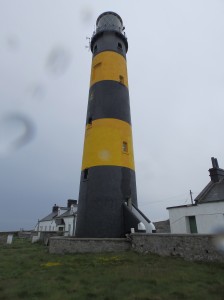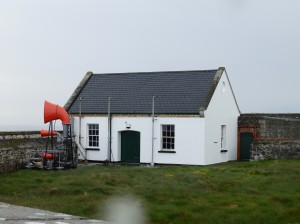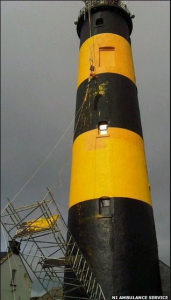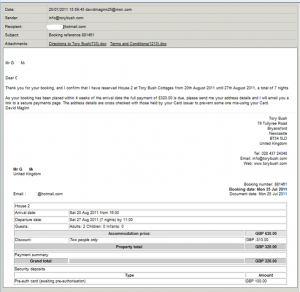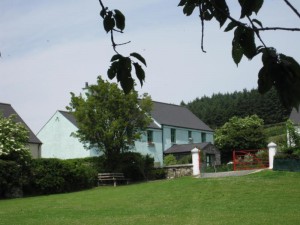The area around Tory Bush is full of hidden gems. One of my favourites is St John’s Point near Killough, Co Down and about half an hours drive from Tory Bush and featured in a recent Radio 4 Open Country programme.
St John’s is not just the site of a lighthouse but also the site of one of the earliest Christian Churches in the North of Ireland. More about the Church in a later Blog, the Lighthouse is now to be part of a ‘Lighthouse Trail’ linking about 8 Lighthouses in interesting sites around the coast of Ireland, here at St John’s the plan is to build two visitor self-catering accommodation units in the old Lighthouse Keepers Cottages and to improve Visitor access facilities, at the present the site is a bit impregnable behind a high wall.
The lighthouse at St John’s is famous or infamous for a number of reasons, it has been recently suggested that the Captain of Brunel’s famous SS Great Britain, the world’s first ironclad ship on setting out on it’s 3rd transatlantic crossing made a navigational error mainly due to not having updated charts, he mistook the new St John’s lighthouse on the County Down Coast for the Calf light on the Isle of Man and ran the ship aground on the inner Dundrum Bay, where she spent the winter of 1846 for more details check out the Tory Bush Facebook page This is not the only occasion when the lighthouse was mistaken for another lighthouse, in 1855 a ship, ‘The Fortune” bound for Australia sailing out of Liverpool again ran aground in Dundrum Bay when the Captain one James McCarthy mistakenly, ” thought that the Kish light was St.John’s Point light, and he mistook St.John’s Point light,for the Copeland lights.”. The ship ran aground near Tyrella and one passenger lost his life whilst abandoning ship and the subsequent Enquiry and Coroners Inquest as reported at the time make interesting reading. Until the building of the Lighthouse and even for a time after there were cases where ‘ vessels are driven on shore, after a deliberate plan to wreck them, and make money more easily by defrauding the underwriters than by risking the perils of long voyages'”. The Captain in this case was cleared of all malice afore-thought.
St John’s enters another league of infamy with it’s association with the famous Irish playwright Brendan Behan, Behan was the son of a House Painter and one of their contracts was the painting of the Lighthouses around Ireland, I am not sure if the colours were yellow and black then as apparently St John’s was used as an experiment to trial this colour scheme to see if it stood out in foggy and hazy days, the experiment must not have been classed as a success as no other Lighthouses followed suit. In the summer of 1950 Brendan was sent up to paint the Co Down lighthouse but his efforts were less than diligent as this letter from the Light Keeper at the time makes clear.
Below is a copy of an excellent article by Ciara Colhoun featured a few years ago in the local paper the Down Recorder.
A summer in Co. Down with Behan
By Ciara Colhoun
ONE of Ireland’s most irreverent writers caused havoc when he was employed to paint St. John’s Point lighthouse over 60 years ago, according to documents recently unearthed.
Retired local lighthouse keeper Henry Henvey has personally recalled the irritation Brendan Behan caused his former employer when he arrived at St. John’s Point in the summer of 1950.
Mr. Henvey, who was a teenager at the time, befriended the budding playwright and has pleasant memories of swimming together in the open sea and enjoying long conversations in the family kitchen.
He recalls Behan spending a lot of time with a neighbour, Miss. Montgomery, who was regarded locally as an intellectual, and says he was later delighted to receive postcards from Behan when he moved to Paris, urging Henry to consider relocating due to the opportunities available in the French capital.
But Henry’s positive experience is at odds with that of the principal lighthouse keeper at the time, Mr. D. Blakely, who was so horrified by Behan’s behaviour that he penned a letter to his boss, calling for his immediate dismissal.
Mr. Henvey keeps a copy of this letter, alongside other documents relating to Behan’s employment, in historical files belonging to the lighthouse.
In it, Mr. Blakely describes Behan as “the worst specimen” he has met in 30 years of service and accuses him of showing “careless indifference” and no respect for property.
He said Behan, who had been released from borstal just four years previously for being a member of the IRA, had failed to turn up for work one day, not returning to the station until 1.25am.
“He is wilfully wasting materials, opening drums and paint tins by blows from a heavy hammer, spilling the contents which is now running out of the paint stores.
“Drums of waterwash opening and exposed to the weather, paint brushes dirty and lying all around the station — no cleaning up of any mess but he tramps through everything.
“His language is filthy and he is not amenable to any law or order.
“The spare house, which was clean and ready for painters has been turned into a filthy shambles inside a week.
“Empty stinking milk bottles, articles of food, coal, ashes and other debris litter the floor of the place which is now in a scandalous condition of dirt.”
Mr. Blakely ends his letter with an urgent call for Behan’s dismissal “before the place is ruined.”
Despite this call, however, Mr. Henvey says Behan was retained by the Irish Lights Office, who held Behan in high regard.
Rather than being dismissed, Behan was retained for a second summer stint as a lighthouse painter, before moving to Paris where he settled into his career as a writer.
Although he kept in touch with Mr. Henvey by postcard, the two men never met again as Mr. Henvey was working at sea when Behan returned to visit the area. However, he says he keenly followed his career, enjoying each piece of Behan’s work as it was published.
“Even as a school boy I was very impressed by Behan, who was already writing s for plays at that time,” he said.
“He told me all about being in jail in Liverpool and said the warden had picked him out from a line-up of boys as an intellectual.
“He saw that he was different from the rest and gave him books to study to try to keep him on the straight and narrow.
“Every Christmas Eve, even after he returned to Dublin, the warden phoned him to see how he was doing.
“Behan kept in touch in Paris but when he moved onto New York I never heard from him again. Like many a good man, he succumbed to beer.”(A little side note, earlier this year I came across this review of Brendan Behans last years in New York, – The Rise and Fall of the most Famous Irish Man in New York”
Mr. Henvey said he had been asked to lend the letter about Behan to a man to photocopy years ago and was disappointed that the original letter was not returned to him. He said the postcards Behan had written to him were now in England.
Just four years after his unsuccessful stint as a lighthouse painter, Behan sealed his place as one of Ireland’s best known writers and talkers with the production of his first highly acclaimed play “The Quare Fellow’. Four years later again, he made use of the irreverence that so troubled his lighthouse employers to create his best-selling autobiographical book, ‘The Borstal Boy”, which told the story about his own time spent in prison.
Now one might imagine that was the end of the incidents involving painters at St John’s Point but in March this year year a painter was trapped halfway up the lighthouse when his platform fell away from the building and he had to be rescued by a specialist team from the Fire and Rescue Service.
Further to my original post which ended at the previous sentence I sent a copy of the post to the Commissioners of Irish Lights and got a very nice reply with a link to a page with the history of the Lighthouse at St John’s its height etc.. St John’s was originally 18.9 metres giving a range of 12 mile across the water, but in the 1890’s it was increased to 40 metres giving a range of 25 mile out over the water. This is as about as high as it needed to be as the horizon is approximately 27 miles away before the earth curves and so the height any lighthouse must take in to consideration the curve of the earth and the height of the ground that the lighthouse is standing on. But the light should not be so high up that local sailors will not see it. It is possible that a sailor sitting a mile or so out at sea may not see the light if the beam is too high. Hence, you will frequently get shorter lighthouses on the top of cliffs and taller lighthouses built nearer the water surface.
The page also gave an insight into the present colour scheme of the lighthouse, when originally built in 1844 it was painted all white, and even when increased in height it was still all white, however in 1902 three black bands were added and then in 1954 the colour was changed to the present scheme which is really a Black Tower with two Yellow bands. Based on this it can be safely assumed that when Brendan Behan was painting the Lighthouse in 1950 that it was still the older Black and White paint scheme, – before the advent of modern polyurethane paints which last 8-10 years, the paint used in the middle of the last century lasted about 4-5 years which fits with the change to Yellow and Black in 1954.
True Grit
I caught a bit of one of my favourite films on Saturday afternoon telly, True Grit with John Wayne, the only movie for which he received an Oscar, and in which he uses the famous line, “Fill your hands, you son of a ****!” as he rides out to face four gunmen.
Earlier in the film Wayne’s character Rooster Cogburn describes someone in a rather derogatory term as having ‘Clabber’ for brains. Here in Northern Ireland we know clabber to be a term for mud or muck made famous by the poem “Livin in Drumlister”, (properly called “Me an’me Da”), by W.F. Marshall, “The Bard of Tyrone, – W F Marshall was actually a Presbyterian Minister and a highly regarded authority on the dialects of Ulster
In True Grit I think the screenwriter was using the term Clabber in it’s American sense as thickened or curdled milk, ie resembling brains but without any functioning ability.
Check out the following links for more info on the word Clabber and how as an ‘Ulster Scots’ word it made it’s way to the Appalachian Mountains and eventually common usage in the South and East USA and as well as the foodstuff can mean any soft gooey substance, hence mud and muck.
ttp://www.bbc.co.uk/ulsterscots/words/clabber
http://en.wikipedia.org/wiki/Clabber_(food)
I have also printed the full words of “Livin in Drumlister” below and if you read through them there is a certain poignancy, the reality of Irish Rural life – the eternal Bachelor, either by accident, design or influence from others as illuminated in the work of Patrick Kavanagh another great recorder of Ulster and Irish Rural life.
Me an’ me Da, (“Livin in Drumlister”)
By W.F. Marshall
I’m livin in Drumlister
An I’m getting very oul’
I have to wear an Indian bag
To save me from the coul.
The deil a man in this townlan’
Wos claner raired nor me,
But I’m livin’ in Drumlister
In clabber to the knee.
Me Da lived up in Carmin,
An’ kep a sarvint boy.
His second wife was very sharp,
He birried her with joy.
Now she wos thin,her name was Flynn
She come from Cullentra,
An’ if me shirts a clatty shirt
The man to blames me Da.
Consarnin weemin sure it wos
A constant word of his,
Keep well away from them that’s thin
Their tempers aisy riz.
Well,I knowed two I thought wud do
But still I had me fears,
So I skiffled back an’ forrit
Between the two,for years.
Wee Margit had no fortune,
But two rosy cheeks wud plaze.
The farm o lan’ was Bridget’s,
But she tuk the pock disayse.
An’ Margit she was very wee,
An’ Bridget she was stout.
But her face was like a goal door,
With the bowlts pult out.
I’ll tell no lie on Margit
She thought the worl’ of me.
I’ll tell the truth me heart wud lep
The sight of her to see.
But I wos slow, ye surely know
The raison of it now,
If I left her home from Carmin
Mr Da wud rise a row.
So I swithered back an forrit’
Till Margit got a man.
A fella come from Mullaslin
An’ left me jist the wan.
I mind the day she went away,
I hid wan strucken hour,
An cursed the wasp from Cullentra
That made me Da so sour.
But cryin cures no trouble,
To Bridget I went back,
An faced her for it that night week
Fornenst her own turf stack
I axed her there,an’spoke her fair,
The handy wife she’d make me,
I talked about the lan’ that joined
-Begob! She wudn’t take me.
So I’m livin in Drumlister
An’ I’m getting very oul’
I creep to Carmin wanst a month
To thry an’ make me sowl
The deil a man in this townlan’
Wos claner raired nor me,
And I’m dying in Drumlister
In clabber to the knee.
Isostatic Rebound
I don’t want to frighten anyone but we are slowly sinking, or rather the Sea Level is rising around us. Combined with all this talk about unprecedented weather, namely high rainfall there are a lot of experts on Telly using a lot of jargon, apparently in parts of the UK all of the expected rain for the month of February fell in the first 4 days of the month,. One piece of jargon I heard was ‘Managed Retreat, viz, “Councils across Wales are now planning for a “managed retreat”. This is a fancy term for the fact that some coastal villages may have to be abandoned to the rising tides.
Check out this link.
http://www.bbc.co.uk/news/uk-wales-26125479
Another term I heard was that of ‘Shoreline Management Plans” ( SMP), which includes actions such as, these Managed Retreats; development of Soft Defences, i.e. making beaches and dunes stable and resilient, and constructing Hard Defences, i.e. building Sea Walls, rock armoring etc.
I decided to check if Northern Ireland had an SMP and it appears that no part of NI has a SMP indeed I came across a submission to the NI assembly by the National Trust dated April 2012 raising that very question.
But one really interesting term I read was “Isostatic Rebound”, as in the phrase “NI will not be protected by Isostatic Rebound anymore”, as used in the following link, (scroll down to top of page 4),
So I decided to check out what this was, hence the images associated with this post. At the peak of the last Ice 20,000 years ago most of the land of the British Isles was covered with Ice Sheets sometimes 2-3 Km thick which caused the earths crust to be pushed down into the liquidy mantle below, 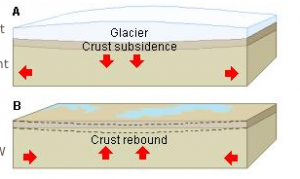 once the ice melted the crust rebounded quite fast initially and is slowly still doing so as the more gooey Mantle flows back into position under the crust.
once the ice melted the crust rebounded quite fast initially and is slowly still doing so as the more gooey Mantle flows back into position under the crust.
The Map of the British Isles, shows what parts are still rising; which are relatively stable and what parts are sinking. It can be seen that in them most of NI is relatively static whilst a bit in the NE, including the Mournes is rising but probably not as much as say N Scotland or Scandinavia, however the static areas and even the rising areas are not keeping apace with the rate of Sea Level Rise which has a global average of 3mm per year.
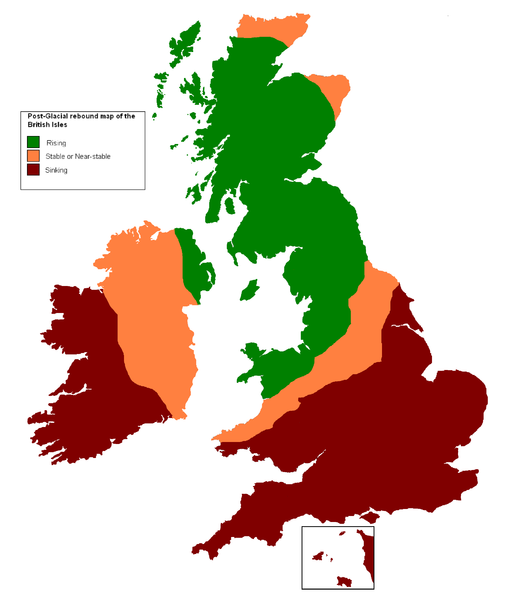 Hence the statement, ‘we are not protected by Isostatic Rebound anymore’. Indeed from the map it can be seen that it is worse for parts of SE and SW England as they are sinking, they were not covered by ice during the Ice Age, to now experience the rebound and worse, the flow of the mantle to the formerly depressed areas is actually causing them to sink. It is no coincidence that these are the areas that are most featured on the news as being subject to flooding.
Hence the statement, ‘we are not protected by Isostatic Rebound anymore’. Indeed from the map it can be seen that it is worse for parts of SE and SW England as they are sinking, they were not covered by ice during the Ice Age, to now experience the rebound and worse, the flow of the mantle to the formerly depressed areas is actually causing them to sink. It is no coincidence that these are the areas that are most featured on the news as being subject to flooding.
In that paper by the NI environment Link organisation it talks about problems for NI in the future caused by the rise in sea level and whilst most of the discussion is at a ‘macro’ level it does mention one village and that village is Dundrum, (again page 4, 3rd para. from bottom), it says some of the new shoreline apartments “could be gone in a matter of decades”, I guess another case of managed retreat.
Always on our guard.
In the tourism business we have always to be on our guard for potential scams and they are getting more plausible as time goes on. A few years ago the scams were very obvious such as a potential booking for 6 Greek Priests or 3 Honeymooning couples, what pair of newly Weds want to go on Honeymoon with another two or three couples.
The premise behind the Scams is to purportedly over-pay for the cost of the stay either by accident or by design, as in the scam below, and then ask the accommodation provider to refund or pass on the over-payment. The scammer hopes that the refund transaction processes faster than the time it takes for their payment to be uncovered as worthless, for example in the time when cheques were more common a Bank might immediately credit your account with the amount on a cheque and then pass it on for clearing, the Bank was always safe in the knowledge that they would recover the funds from your account if the cheque later bounced at the presenting Bank, – by this time the hotel or B & B may have already refunded the scammer.
This scam below almost caught me out as it enquires about dates that are proving popular for competitors in the upcoming World Police and Fire Games – I even initially assumed it was potentially a Police Station or Fire Station based on St. Vincent Street in Glasgow as they even go as far as providing a real address, on a street that I know well as my Business Bank is based there. When I got the second tersely worded email asking for a total price and asking about payment by Credit Card my suspicions were raised and though I replied I then checked the email address out by pasting it in a Google Search Bar plus the word ‘Scam’ and the following scam warning site came up. “Scamwarners“
Sure enough I then got the final email asking me to take my payment from their Credit Card Payment and pass on £3000 to their travel agent who does not have Credit Card facilities, (Doh!! what agent could not take Credit Cards), you can see my final email saying that I did not wish to proceed with this booking. I am not sure how the logistics of their Card payment would operate as my system requires bona fide addresses which are cross referenced with the` Card details but I am not going to hang around to find out.
It just makes one feel slightly violated to think one has been in contact with such criminals.
> Date: Sat, 11 May 2013 15:51:55 -0700
> Subject: booking
> From: vkel04v@gmail.com
> To:
>
> Hello,
>
> I want to inquire about the rooms reservation for 6 people from 21st
> to 27th of July, 2013.
>
> The information that I request are as follows:
> Arrival date: 21st July
> Departure date: 27th July
> number of guests: 6
> number of rooms :3
> Get back to me if you have opening for reservation during my stated date.
>
> Warm Regards,
>
> Kelvin Coleman
> 19 St. Vincent Street
> Glasgow
> G2 5NW
> Scotland
From: David Maginn <davidmaginn25@msn.com>
Subject: RE: booking
To: “Kelvin Coleman” <vkel04v@gmail.com>
Date: Tuesday, 14 May, 2013, 13:02
Kelvin,
Thank you for your enquiry, sorry for the delay in replying.
I can confirm that I have a 3 bedroom 6 person house for your dates and the price would be £651.00 plus gas heating, (which should be minimal in July hopefully!!)
All the beds can be used as singles or as doubles.
David Maginn
Kelvin Coleman (kel04v@yahoo.com)
To: David Maginn
Date: Tue, 14 May 2013 15:52:24 +0100
From: kel04v@yahoo.com
Subject: RE: booking cost
To: davidmaginn25@msn.com
| Hello ,
Thanks for email and confirming that you have availability for reservation.I want to have the grand total cost for reservation – I also want you to confirm if its possible to make advance payment via credit card to properly secure the reservation …
Awaiting your swift response,
Kelvin
|
On Tue, 14/5/13, David Maginn <davidmaginn25@msn.com> wrote:
From: David Maginn <davidmaginn25@msn.com>
Subject: RE: booking cost
To: “Kelvin Coleman” <kel04v@yahoo.com>
Date: Tuesday, 14 May, 2013, 16:26
Kelvin
It is difficult to predict an inclusive price, but as I emailed earlier the rental is £651.00 and I would estimate the heating to cost £20 for six days so a total price would be £671.00.
Yes it is possible to pay by Credit Card at this stage all we require is a 20% deposit, i.e. £134.20.
I hope that this is of help.
David Maginn
| hello ,
Thanks for your email and for the total cost for the reservation which you have provided.i have concluded all payment arrangement.
As soon as you receive my card detail for payment,I will like you to take the following steps:
A) Make an total charge of £3671.00 + bank charges from my card Detail.
B) Deduct the total deposit of £671.00 needed to secure book-
C) send the balance of £3000.00 via bank transfer to the prepaid travel agent who will handle our traveling logistics which i will advice.
The travel agent is in charge of the procurement of flight tickets of guests to and fro.
However, because agent do not have credit card facility and for security reason,i have decided that ONLY YOU will have to handle the credit card information.
PLEASE CONFIRM IF THIS ARRANGEMENT IS OK. Awaiting your swift response,
Kelvin
Kelvin, Sorry this is not ok, I do not wish to proceed with this booking. David Maginn
|
Henry Ford and Tory Bush
We are planning a‘Biomass’ heating system at Tory Bush, where all our energy will come from wood pellets, the pellets used to be made from compressed surplus sawdust from one of N I’s biggest saw mills. Now because of the increased demand ordinary lumber is being used to make the pellets, no longer the waste-product of the mill and I am sure timber is being specifically grown for pellet production. I see a time, with this switch to Biomass, which includes wood burning stoves, that timber will become a premium here in Ireland and we will have to import it and the question will be, is that any better than importing coal and oil.
As part of my planning research for this switch from Fossil Fuel to Biomass I came across the following perceptive quote,“The fuel of the future is going to come from fruit, weeds, sawdust and almost anything. There’s enough energy in an acre of potatoes to drive the machinery necessary to cultivate the field for one hundred years.”Henry Ford 1925.
Mourne Mountains
 Walk on the cobbles of Coronation Street, stand on the plinth of the Albert Memorial in London and your feet are on Granite from the Mourne Mountains in Co. Down however there is nothing like coming to walk on the granite slopes of the Mournes for real.
Walk on the cobbles of Coronation Street, stand on the plinth of the Albert Memorial in London and your feet are on Granite from the Mourne Mountains in Co. Down however there is nothing like coming to walk on the granite slopes of the Mournes for real.
Rude rude owner.
Rude rude owner.
I have been accused of being rude, please read through and make your own decision, I have attached the booking form to show the hefty discount I was offering for two persons only. I have redacted any means of identifying the writers of the review.
These Guests phoned in July to book a house in August for two people, and I told them I only had the Eco-Loft available which slept only 2 persons in one bedroom and Apartment 6 which slept up to 4 but that I would offer a low-occupancy discount based on two people, they asked could they view them on the internet and I gave the appropriate details.
They came back a day or so later saying they would prefer a house that opened directly onto a garden as opposed to a balcony in the case of number 6, and that there might be more people staying.
I suggested I had house number 2 available but that it was a large house capable of sleeping 6 people so would cost more but that I would still offer a low occupancy discount and that they could pay for any additional guests on a nightly price of £20 per person. They send me a text saying their budget was limited to £360 and I replied by text that I would offer House 2 at £320 for two people and that they could pay for any additional guests at £20 per night.
They replied ‘Thanks, that’s great’ and said they wished to book.
I drew up the booking form below, which shows the full price of the house at £630 but with a ‘low occupancy discount’ of £310, (they were getting the house for basically half price) and emailed it to them on the 25/7/11, and asking for their address details to initiate payment.
I got the following reply on the 2/8/11,
“Hi there, Could you resent payment email. I am paying today but the email seems to been deleted from my junk folder. Apologies for the delay. Thanks K M”
I replied that I would resend the email the next day as I was out of the office. I also sent a text on the 3/8/11 asking again for their address details as it would not be possible to pay online as the Card used is checked against the address details.
I never got these details, instead I got a call a night or two later on my mobile phone from the husband of the couple, saying they were only going to pay the £320 and did not see why they had to pay the extra to have people come down and stay. I said ‘ G… lets cancel the booking and that I am sure that you can find cheaper accommodation somewhere else.’ At that point the mobile phone signal broke-off, I expected the couple to phone back but they did not.
Coincidentally the fact that they phoned on the mobile is significant, not only from the point of view that signal failed which may appear as I rudely ‘hung up’, but to make the mobile phone work in my office I have to leave it in a window and put it on speaker phone when someone calls and not move the phone. As a consequence of this I have a witness to the conversation with G. M. and they were quite shocked by the manner in which I was addressed.
Reviews on Tripadvisor.
I have had a number of Bad reviews on Tripadvisor, ‘I’ being the operative word as the critical reviews are more about me than about the properties, if anything the reviews praise the Cottages but have issues about my manner or the rules and regulations I use in the management of the Cottages. Any rule or regulation we have are for the benefit of the guests who have paid their money and chosen to have stayed with us. We see Tory Bush as more than mere accommodation for the night but a holiday experience, we even have people in their twenties now coming back to have their own children experience a place where they had a great child-hood holiday, when I see them bring their grandchildren then I know I will have been in this business too long!
Red Squirrel trees
Woodland managers who require broadleaves for landscape or biodiversity reasons should use any of the following species – birch, rowan, ash, willow, aspen or alder. These species produce small seed and although they are not a favoured food source for the red squirrel, they do not encourage grey squirrel incursions.
I thought I would begin this blog with a photograph, partly to add content but also to test out a little bit of software. I have tried to upload photos before but they have failed and latterly I have learned that the file size may have been too big, just too much detail for blogger to handle, apparently an image on the internet does not need to be as ‘intense’ as an image for, say a glossy colour brochure. So my bit of software can reduce the number of pixels in the photographs so that they can be uploaded much more quickly but still be viewable.
As a consequence of being in the tourism business we get bombarded with information from one source or another, the Northern Ireland Tourist Board has three publications, The View, Tourism Eye, and the Tourism Spotlight, who these are intended for and how the content differs I don’t know. We get another publication from ‘TIL’ , (Tourism Ireland Limited) which is the organisation charged with marketing Ireland on a whole Island basis, there is also Failte Ireland which is responsible for marketing the South of Ireland and I am sure that they have a raft of in-house publications as well.



